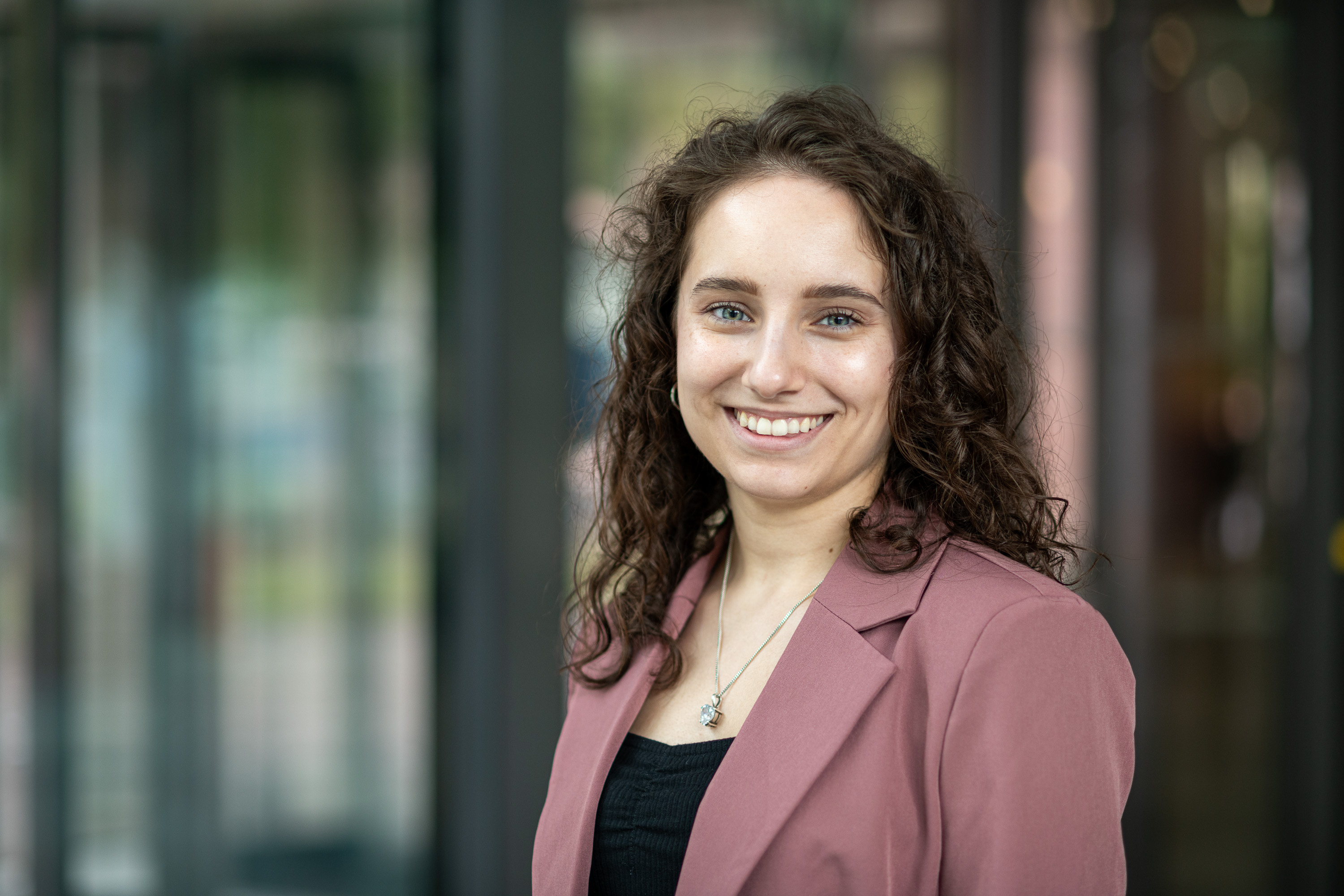Bernadette Mederer

Address:
Permoserstr. 15
04318 Leipzig
Building: 7.3
Room: 2.028
Phone: +49 341 6025 3847
Bernadette Mederer
Bernadette Mederer joined the Department of Cell Toxicology in June 2024. During her Bachelor studies in Physical Geography from 2017 to 2020 at the Friedrich-Alexander-University Erlangen-Nuremberg, she discovered her passion for environmental pollutants. This is why she specialized on their fate and ecological effects with a subsequent Master’s program in Ecotoxicology at the Rhineland-Palatinate Technical University Kaiserslautern-Landau (RPTU).
Due to her interest in risk assessment of environmental pollutants, she utilized real-life monitoring data of surface waters in Saxony in her Master thesis to predict change in the risks posed to algae, fish and invertebrates using the machine-learning algorithm “random forest”. To model pesticide number and concentrations, spatial parameters such as precipitation, crops and humus content of soils were included.
After obtaining her Master’s degree in 2023, she worked for the Eußerthal Ecosystem Research Station (EERES) at the RPTU. She contributed for instance to the EU-funded project POLYRAS (part of Interreg funding) targeted on developing sustainable recirculating aquaculture systems with polyculture and reducing their environmental footprint. But she also assisted in different wildlife protection projects.
Her doctoral thesis is part of the Sinergia Project funded by the Swiss National Science Foundation. Her work aims to determine the risk potential of antioxidants under the use of high-throughput in-vitro bioassays on robotic platforms. With the primary objective of improving the European chemical regulation (REACH), integration of the two novel hazard indicators cumulative toxicity equivalents (CTE) and persistent toxicity equivalents (PTE) will be evaluated with antioxidants as proof-of-principle substances. Bernadette is focusing on bioassays capturing reactive toxicity, namely oxidative stress and genotoxicity, as well as adaptive stress responses. Additionally, a fit test battery covering carcinogenicity, mutagenicity, reproduction toxicity and endocrine disruption will be developed. To capture the risk potential adequately, possible increase in toxicity is assessed for metabolites of the used antioxidants.
Due to her interest in risk assessment of environmental pollutants, she utilized real-life monitoring data of surface waters in Saxony in her Master thesis to predict change in the risks posed to algae, fish and invertebrates using the machine-learning algorithm “random forest”. To model pesticide number and concentrations, spatial parameters such as precipitation, crops and humus content of soils were included.
After obtaining her Master’s degree in 2023, she worked for the Eußerthal Ecosystem Research Station (EERES) at the RPTU. She contributed for instance to the EU-funded project POLYRAS (part of Interreg funding) targeted on developing sustainable recirculating aquaculture systems with polyculture and reducing their environmental footprint. But she also assisted in different wildlife protection projects.
Her doctoral thesis is part of the Sinergia Project funded by the Swiss National Science Foundation. Her work aims to determine the risk potential of antioxidants under the use of high-throughput in-vitro bioassays on robotic platforms. With the primary objective of improving the European chemical regulation (REACH), integration of the two novel hazard indicators cumulative toxicity equivalents (CTE) and persistent toxicity equivalents (PTE) will be evaluated with antioxidants as proof-of-principle substances. Bernadette is focusing on bioassays capturing reactive toxicity, namely oxidative stress and genotoxicity, as well as adaptive stress responses. Additionally, a fit test battery covering carcinogenicity, mutagenicity, reproduction toxicity and endocrine disruption will be developed. To capture the risk potential adequately, possible increase in toxicity is assessed for metabolites of the used antioxidants.
